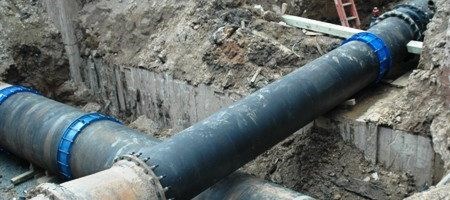Aging underground water infrastructure is going to cost homeowners in Yorkton more when connections to their houses fail.
The bylaw passed at the regular meeting of Yorkton Council is designed to have the City recoup its costs when doing repairs, Trent Mandzuk, Director of Public Works with the City, said during the regular council meeting on Monday.
So far in 2018, Mandzuk said they have dealt with “over 50 service leaks,” with the city carrying the $5000 cost per leak (totalling $250,000 so far this year).
“Like any other infrastructure … it’s not going to get any better,” he said. “If this year is evidence of things to come … it’s a reality we have to deal with.”
It is not exactly a new issue.
“Over the past decade residential service connections are becoming more problematic for home owners. The most common problem for older homes are those with sanitary sewer connections constructed of clay-tile piping. Pipe joints on these types of connections are prone to tree root infiltration which over time will obstruct flow causing sewer back-up into residential properties. Water services are also starting to show an increasing rate of failure in certain areas of the City. Leaks from failing water service pipes can cause damage to surrounding infrastructure like home owner driveways, sidewalks, curbs and basements depending on severity of the leak and length of time it has been leaking,” he explained.
But doing the work comes at a cost.
Installation rates identified in the current Waterworks Sewer and Water Services Bylaw are considerably lower than actual costs, said Mandzuk.
In part the costs faced are because of a change in practice in doing the work.
“It is also important to note that the City’s construction practices have changed considerably over that time. A previous lack of engineering standards and well-defined field practices has resulted in settlement of many older service connections. Trench settlements create annoying dips in the road, curb and sidewalk in front of residential properties. These settlements also impede drainage resulting in ponding on the street. As a result, the roadway surface fails prematurely and the underlying road structure is jeopardized. The only way to eliminate this problem is to ensure proper trench compaction is achieved at the time of install,” detailed Mandzuk.
“Implementation of engineering standards into service connection installation practices has resulted in the operation taking longer. A job that used to take six hours can now take up to 10 hours. Proper trench compaction is the most important part of the process and takes the longest to perform. Soil density testing is now a routine part of quality assurance to confirm engineering standards have been conformed to. The cost of providing this service has increased largely due to the time required to install correctly but the end result is a better product turned over to the property owner.”
A reoccurring problem is tree roots getting into sewer connections and plugging them, but Mandzuk said the underlying issue is not the tree roots.
“Older sanitary services, particularly those constructed from clay tile, have pipe joints that are susceptible to tree root infiltration. Therefore, pipe material and original construction practices are the actual cause of the problem,” he reported.
Mandzuk said they have looked at repair options too.
“A relining option for sanitary sewer connections has been added to the list of services … This method of rehabilitation uses an epoxy based fiberglass liner which is placed inside the existing pipe,” he said.
The only caveat for this option is that the existing pipe must be suitable for relining.
The proposed bylaw passed unanimously.



